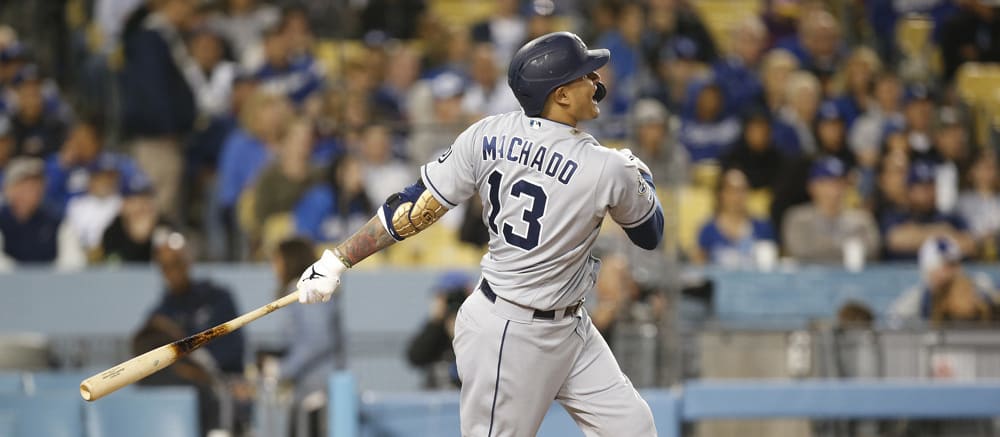This article is part of our MLB Barometer series.
The constant stream of up-to-date analysis, backed up by ever-improving stats that let us evaluate smaller and smaller samples with increasingly high accuracy, is without a doubt a positive thing for fantasy players. Those willing to invest the time can get a true edge over their opponents. The wealth of available articles and podcasts can also provide entertainment value of their own accord, and serve as a great way to pass the time while "working". (Hello to all of you currently taking a bathroom break.)
One potential downside of the amount of available content is that it can be hard to remember what we used to think. Can you remember what you thought about a given player just a few years ago, having read 47 articles and listened to 12 podcasts that discussed him in the meantime? In most cases, the reason new content gets created is that it's more accurate, but in certain cases, it's worth remembering what a player's reputation used to be.
Lucas Giolito's recent breakout is the perfect example of this phenomenon. He'll get a full look as the first Riser shortly, but it's worth a quick mention of how he was viewed just three years ago, prior to his big-league debut. After three seasons of unimpressive (at best) performances, you could be forgiven for thinking that he was only ever considered a pretty good prospect, but back in 2016 he was considered truly elite, ranking third according to Baseball Prospectus, MLB.com and John
The constant stream of up-to-date analysis, backed up by ever-improving stats that let us evaluate smaller and smaller samples with increasingly high accuracy, is without a doubt a positive thing for fantasy players. Those willing to invest the time can get a true edge over their opponents. The wealth of available articles and podcasts can also provide entertainment value of their own accord, and serve as a great way to pass the time while "working". (Hello to all of you currently taking a bathroom break.)
One potential downside of the amount of available content is that it can be hard to remember what we used to think. Can you remember what you thought about a given player just a few years ago, having read 47 articles and listened to 12 podcasts that discussed him in the meantime? In most cases, the reason new content gets created is that it's more accurate, but in certain cases, it's worth remembering what a player's reputation used to be.
Lucas Giolito's recent breakout is the perfect example of this phenomenon. He'll get a full look as the first Riser shortly, but it's worth a quick mention of how he was viewed just three years ago, prior to his big-league debut. After three seasons of unimpressive (at best) performances, you could be forgiven for thinking that he was only ever considered a pretty good prospect, but back in 2016 he was considered truly elite, ranking third according to Baseball Prospectus, MLB.com and John Sickels. Of course, there will always be busts, and it hardly would have been surprising had Giolito ended up being one of them. Anyone who decided to ignore the more recent analysis and performance and take a chance on a former top-three prospect in Giolito with a late-round dart this draft season is certainly feeling pretty smart right about now, however.
There's a possible lesson there for those looking for sleepers next draft season. Try forgetting everything you've read and heard about a player recently and looking back at their reports from two or three years ago. If he was talented then, there's a good chance he's still talented now. There may be hundreds of more recent pieces out there explaining why he hasn't performed up to expectations so far, and that analysis is likely well-reasoned and accurate, but there's still value in remembering what we used to think.
RISERS
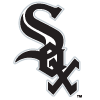 Lucas Giolito, SP, White Sox: Giolito's 2.28 ERA and 30.8 percent strikeout rate (fourth and eighth among qualified starters, respectively) are easily enough to put him on the short list for breakout star of the season. He's gotten even better as the season's progressed and is currently riding a seven-start winning streak in which he's recorded an incredible 0.88 ERA. Sure, he's faced the Royals, Blue Jays and the surprisingly weak Indians twice each over that stretch, but he also shut out the Astros, and it's not as if the AL Central will suddenly get more difficult in the second half of the season. Perhaps we should have seen at least some of this coming, as Giolito is still just 24 years old and (as mentioned above) was one of the top prospects in the game just a few years ago, but it's hard to blame the fantasy community too much for overlooking a player who owned a 5.48 ERA and a 16.1 percent strikeout rate through his first 240 major-league innings. The ERA estimators suggest that at least some regression is in order, but even if his ERA slides back in line with his 3.54 xFIP he'll still be a massive bargain for those lucky fantasy owners who picked him up virtually for free during draft season or early in the year.
Lucas Giolito, SP, White Sox: Giolito's 2.28 ERA and 30.8 percent strikeout rate (fourth and eighth among qualified starters, respectively) are easily enough to put him on the short list for breakout star of the season. He's gotten even better as the season's progressed and is currently riding a seven-start winning streak in which he's recorded an incredible 0.88 ERA. Sure, he's faced the Royals, Blue Jays and the surprisingly weak Indians twice each over that stretch, but he also shut out the Astros, and it's not as if the AL Central will suddenly get more difficult in the second half of the season. Perhaps we should have seen at least some of this coming, as Giolito is still just 24 years old and (as mentioned above) was one of the top prospects in the game just a few years ago, but it's hard to blame the fantasy community too much for overlooking a player who owned a 5.48 ERA and a 16.1 percent strikeout rate through his first 240 major-league innings. The ERA estimators suggest that at least some regression is in order, but even if his ERA slides back in line with his 3.54 xFIP he'll still be a massive bargain for those lucky fantasy owners who picked him up virtually for free during draft season or early in the year.
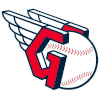 Francisco Lindor, SS, Indians: Lindor is back and possibly better than ever. He understandably took a bit of time to get going after missing the first few weeks of the season with ankle and calf injuries, posting a modest .729 OPS over his first 14 games of the season. In the 32 games since that mediocre start, he's produced an excellent .328/.401/.570 slash line, raising his season line to .298/.366/.536. That on-base percentage and slugging percentage each represent career highs, as does his 131 wRC+. His Statcast numbers support his performance, as he has a career bests in barrel rate (10.5 percent), exit velocity (91.2 mph), hard-hit rate (42.5 percent) and expected batting average (.302). It shouldn't be all that surprising to see a talented 25-year-old take another step forward, and Lindor appears to be doing just that now that his injuries are fully behind him.
Francisco Lindor, SS, Indians: Lindor is back and possibly better than ever. He understandably took a bit of time to get going after missing the first few weeks of the season with ankle and calf injuries, posting a modest .729 OPS over his first 14 games of the season. In the 32 games since that mediocre start, he's produced an excellent .328/.401/.570 slash line, raising his season line to .298/.366/.536. That on-base percentage and slugging percentage each represent career highs, as does his 131 wRC+. His Statcast numbers support his performance, as he has a career bests in barrel rate (10.5 percent), exit velocity (91.2 mph), hard-hit rate (42.5 percent) and expected batting average (.302). It shouldn't be all that surprising to see a talented 25-year-old take another step forward, and Lindor appears to be doing just that now that his injuries are fully behind him.
 Jay Bruce, 1B/OF, Phillies: Bruce's move from Seattle to Philadelphia didn't appear to be a great one for his fantasy value initially, as it was tough to see him carving out a significant role with Andrew McCutchen and Bryce Harper in the outfield corners and Rhys Hoskins at first base. The trade turned out to be impeccably timed, as McCutchen went down for the year with a torn ACL the same day Bruce played his first game for his new team. While he isn't going to keep up the .381/.381/1.048 line he's posted through six games with his new team, there are plenty of reasons to be optimistic about the veteran's value going forward. Already in Seattle, he'd seemed to have gotten past his injury-filled 2018 campaign. Throw that year out, and he'd hit at least 30 homers two seasons in a row and in five of the last seven seasons. Sure, he'll drain your batting average, but the power is legitimate, and moving to a very homer-friendly home park is only going to make him look even better. Throw in the chance to hit behind players like Harper and Hoskins on a regular basis, and Bruce starts to look like a very appealing fantasy outfielder as long as he can remain healthy.
Jay Bruce, 1B/OF, Phillies: Bruce's move from Seattle to Philadelphia didn't appear to be a great one for his fantasy value initially, as it was tough to see him carving out a significant role with Andrew McCutchen and Bryce Harper in the outfield corners and Rhys Hoskins at first base. The trade turned out to be impeccably timed, as McCutchen went down for the year with a torn ACL the same day Bruce played his first game for his new team. While he isn't going to keep up the .381/.381/1.048 line he's posted through six games with his new team, there are plenty of reasons to be optimistic about the veteran's value going forward. Already in Seattle, he'd seemed to have gotten past his injury-filled 2018 campaign. Throw that year out, and he'd hit at least 30 homers two seasons in a row and in five of the last seven seasons. Sure, he'll drain your batting average, but the power is legitimate, and moving to a very homer-friendly home park is only going to make him look even better. Throw in the chance to hit behind players like Harper and Hoskins on a regular basis, and Bruce starts to look like a very appealing fantasy outfielder as long as he can remain healthy.
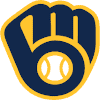 Yasmani Grandal, C, Brewers: Grandal has been on a tear over the last few weeks, posting a .310/.429/.672 line over his last 17 games, walking more times (12) than he's struck out (11). That hot streak has brought his season slash line up to .274/.377/.522, numbers which would be full-season career highs in all three categories. It wasn't a particularly difficult prediction to guess that Grandal's numbers would increase at least slightly given the differences in park factors between Dodger Stadium and Miller Park, but his improvements have gone beyond that simple change in address, as evidenced by his jump in wRC+ (which takes park factors into account) from 125 to 133. He's seemingly improved his offensive game across the board: he's striking out less than he has since 2013 (20.9 percent), walking more often that he has since 2015 (14.2 percent) and has Statcast-era bests in hard-hit rate (45.3 percent), exit velocity (91.1 mph) and expected batting average (.252). The difference between his expected and actual batting averages does hint towards some regression coming, but this is still a player making better and more frequent contact than he has in years in his age-30 season.
Yasmani Grandal, C, Brewers: Grandal has been on a tear over the last few weeks, posting a .310/.429/.672 line over his last 17 games, walking more times (12) than he's struck out (11). That hot streak has brought his season slash line up to .274/.377/.522, numbers which would be full-season career highs in all three categories. It wasn't a particularly difficult prediction to guess that Grandal's numbers would increase at least slightly given the differences in park factors between Dodger Stadium and Miller Park, but his improvements have gone beyond that simple change in address, as evidenced by his jump in wRC+ (which takes park factors into account) from 125 to 133. He's seemingly improved his offensive game across the board: he's striking out less than he has since 2013 (20.9 percent), walking more often that he has since 2015 (14.2 percent) and has Statcast-era bests in hard-hit rate (45.3 percent), exit velocity (91.1 mph) and expected batting average (.252). The difference between his expected and actual batting averages does hint towards some regression coming, but this is still a player making better and more frequent contact than he has in years in his age-30 season.
 Nick Pivetta, SP, Phillies: No one in their right mind would complain about Pivetta's 1.80 ERA, 2.80 FIP, 28.8 percent strikeout rate or 2.7 percent walk rate. Unfortunately, those aren't his season-long numbers, but rather his numbers in three starts since he returned from an early demotion to Triple-A. Those who bought into the Pivetta hype over the offseason but didn't have enough roster spots to wait for him to return from the minors would have taken the hit of his 8.35 ERA over his first four starts and then not gotten to enjoy his recent strong performances, but those who could afford to be patient are certainly reaping the rewards. Three starts aren't enough to say that Pivetta is suddenly a new pitcher who will perform at this level going forward, but it's enough to remind everyone what he can do when he's on and his mistakes aren't all flying out of the yard. More multiple-homer implosions are surely in the cards at some point this season, but if you're looking for a starter who is always good for a high strikeout rate and at least a chance at a good ERA, Pivetta is back to being that guy.
Nick Pivetta, SP, Phillies: No one in their right mind would complain about Pivetta's 1.80 ERA, 2.80 FIP, 28.8 percent strikeout rate or 2.7 percent walk rate. Unfortunately, those aren't his season-long numbers, but rather his numbers in three starts since he returned from an early demotion to Triple-A. Those who bought into the Pivetta hype over the offseason but didn't have enough roster spots to wait for him to return from the minors would have taken the hit of his 8.35 ERA over his first four starts and then not gotten to enjoy his recent strong performances, but those who could afford to be patient are certainly reaping the rewards. Three starts aren't enough to say that Pivetta is suddenly a new pitcher who will perform at this level going forward, but it's enough to remind everyone what he can do when he's on and his mistakes aren't all flying out of the yard. More multiple-homer implosions are surely in the cards at some point this season, but if you're looking for a starter who is always good for a high strikeout rate and at least a chance at a good ERA, Pivetta is back to being that guy.
FALLERS
 Manny Machado, 3B/SS, Padres: The Padres made moves to improve this offseason and appear to have done so, sitting at .500 through 66 games after eight straight losing seasons. The big surprise is that they've done so despite the struggles of their prized acquisition, the $300 million man Machado. Some drop in his numbers was expected with the move to San Diego after spending the bulk of his career in the hitters' paradise in Baltimore, but he's fallen far more than anticipated, posting a .242/.327/.403 slash line, good for a thoroughly unimpressive 96 wRC+. His strikeout rate has increased by nearly seven points, up from 14.7 percent last year to 21.6 percent this season, and he's making worse contact when he does hit the ball, with his lowest hard-hit rate (42.8 percent) since 2015 and his lowest expected batting average (.254) of the Statcast era. This season's struggles are beginning to make Machado's 2017 season, in which he recorded a forgettable 103 wRC+, look like far less of an outlier, raising worries that he may be more good than great at the plate going forward.
Manny Machado, 3B/SS, Padres: The Padres made moves to improve this offseason and appear to have done so, sitting at .500 through 66 games after eight straight losing seasons. The big surprise is that they've done so despite the struggles of their prized acquisition, the $300 million man Machado. Some drop in his numbers was expected with the move to San Diego after spending the bulk of his career in the hitters' paradise in Baltimore, but he's fallen far more than anticipated, posting a .242/.327/.403 slash line, good for a thoroughly unimpressive 96 wRC+. His strikeout rate has increased by nearly seven points, up from 14.7 percent last year to 21.6 percent this season, and he's making worse contact when he does hit the ball, with his lowest hard-hit rate (42.8 percent) since 2015 and his lowest expected batting average (.254) of the Statcast era. This season's struggles are beginning to make Machado's 2017 season, in which he recorded a forgettable 103 wRC+, look like far less of an outlier, raising worries that he may be more good than great at the plate going forward.
 Jose Ramirez, 3B, Indians: Ramirez featured in this column in mid-April after opening the season hitting .140/.180/.193 through his first 15 games. Since that point, he's improved, but his .223/.333/.335 slash line over his last 49 games remains very far below expectations for a player who was often the third player off the board during draft season. His 11.4 percent walk rate and 14.8 percent strikeout rate on the season, while still strong, have each moved in the wrong direction by at least three points since last year. More significantly, his quality of contact has degraded significantly. His launch angle has increased to 21.4 degrees, which can be a good thing but certainly isn't when paired with a drop in hard-hit rate of over five points down to an unimpressive 29.8 percent. The result has been a lot of weak flyouts and just four homers. There's still time for Ramirez to crawl out of the hole and provide at least some value, but his value is plummeting -- in the NFBC's Second Chance drafts held Memorial Day weekend, he fell as low as 34th, with an ADP of 26.20.
Jose Ramirez, 3B, Indians: Ramirez featured in this column in mid-April after opening the season hitting .140/.180/.193 through his first 15 games. Since that point, he's improved, but his .223/.333/.335 slash line over his last 49 games remains very far below expectations for a player who was often the third player off the board during draft season. His 11.4 percent walk rate and 14.8 percent strikeout rate on the season, while still strong, have each moved in the wrong direction by at least three points since last year. More significantly, his quality of contact has degraded significantly. His launch angle has increased to 21.4 degrees, which can be a good thing but certainly isn't when paired with a drop in hard-hit rate of over five points down to an unimpressive 29.8 percent. The result has been a lot of weak flyouts and just four homers. There's still time for Ramirez to crawl out of the hole and provide at least some value, but his value is plummeting -- in the NFBC's Second Chance drafts held Memorial Day weekend, he fell as low as 34th, with an ADP of 26.20.
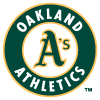 Khris Davis, OF, Athletics: Davis was already having a slightly down season through his first 35 games, hitting .229 with a good but not great .784 OPS. Midway through that 35th game, in a rare outfield appearance away against the Pirates, he crashed into the side wall and was removed with a hip contusion. He played sporadically over the next two weeks, hitting quite well (a 1.053 OPS in seven games) when available, before finally heading for a brief stint on the injured list. In his nine games since returning, he's posted a .211/.250/.316 slash line, bringing his season wRC+ down to a thoroughly pedestrian 102. His batted-ball stats support the idea that it's been a down season across the board, as he's posted Statcast-era lows in barrel rate (12.5 percent), hard-hit rate (39.8 percent) and expected slugging (.466). While it's certainly possible that Davis bounces back as the injury moves further into the rear view mirror, fears of nagging pain adding onto the natural loss of athleticism in his age-31 season can't be ignored.
Khris Davis, OF, Athletics: Davis was already having a slightly down season through his first 35 games, hitting .229 with a good but not great .784 OPS. Midway through that 35th game, in a rare outfield appearance away against the Pirates, he crashed into the side wall and was removed with a hip contusion. He played sporadically over the next two weeks, hitting quite well (a 1.053 OPS in seven games) when available, before finally heading for a brief stint on the injured list. In his nine games since returning, he's posted a .211/.250/.316 slash line, bringing his season wRC+ down to a thoroughly pedestrian 102. His batted-ball stats support the idea that it's been a down season across the board, as he's posted Statcast-era lows in barrel rate (12.5 percent), hard-hit rate (39.8 percent) and expected slugging (.466). While it's certainly possible that Davis bounces back as the injury moves further into the rear view mirror, fears of nagging pain adding onto the natural loss of athleticism in his age-31 season can't be ignored.
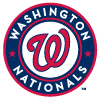 Victor Robles, OF, Nationals: Robles came out swinging after making the Opening Day roster for the first time in his career, hitting a solid .269/.312/.477 through his first 35 games. He's been in a prolonged slump since then, going .185/.305/.333 over his last 27 games and stealing just a single base. He does have nine homers and nine steals, giving him a good shot at a 20-20 season, but his .235 batting average has been a drain in that category and doesn't look likely to improve any time soon. Robles really doesn't hit the ball hard at all, as his 80.5 mph exit velocity ranks in the bottom one percent of the league. Statcast gives him an expected batting average of just .215, a number he should continue to outpace due to his speed, but that speed can only carry him so far. There's little reason to fear for Robles' long-term outlook, as he remains very talented and is at least holding his own at 22 years old, but it doesn't look like he's ready to be a star just yet.
Victor Robles, OF, Nationals: Robles came out swinging after making the Opening Day roster for the first time in his career, hitting a solid .269/.312/.477 through his first 35 games. He's been in a prolonged slump since then, going .185/.305/.333 over his last 27 games and stealing just a single base. He does have nine homers and nine steals, giving him a good shot at a 20-20 season, but his .235 batting average has been a drain in that category and doesn't look likely to improve any time soon. Robles really doesn't hit the ball hard at all, as his 80.5 mph exit velocity ranks in the bottom one percent of the league. Statcast gives him an expected batting average of just .215, a number he should continue to outpace due to his speed, but that speed can only carry him so far. There's little reason to fear for Robles' long-term outlook, as he remains very talented and is at least holding his own at 22 years old, but it doesn't look like he's ready to be a star just yet.
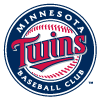 Willians Astudillo, C, Twins: Even ignoring Astudillo's claim to Bartolo Colon's throne as the player who least inspires fans to go to the gym, the catcher generated widely varying amounts of interest during draft season. He was coming off a season in which he hit an excellent .355/.371/.516 in 30 games but also had no clear path to a roster spot, let alone a starting gig. I counted myself in the camp that believed his talent would eventually win out, so his recent demotion to Triple-A Rochester means I'll have to take the loss so far, though not necessarily for the expected reasons. Sure, Astudillo's slash line dropped to an unimpressive .250/.273/.357, but a 102-point drop in his BABIP explains a large part of those struggles, as Statcast gives him an expected batting average of .288. The main reason for Astudillo's lack of value is that the rest of the Twins' offense improved dramatically around him, particularly the team's two catchers, Mitch Garver and Jason Castro, who own slash lines of .317/.410/.693 and .272/.368/.565, respectively. With no room for at-bats behind the plate and Marwin Gonzalez filling the utility role, there's simply no spot on the roster for Astudillo. He remains worth keeping an eye on in case injuries open up a path to playing time, but there's little point holding onto him in the meantime in most formats.
Willians Astudillo, C, Twins: Even ignoring Astudillo's claim to Bartolo Colon's throne as the player who least inspires fans to go to the gym, the catcher generated widely varying amounts of interest during draft season. He was coming off a season in which he hit an excellent .355/.371/.516 in 30 games but also had no clear path to a roster spot, let alone a starting gig. I counted myself in the camp that believed his talent would eventually win out, so his recent demotion to Triple-A Rochester means I'll have to take the loss so far, though not necessarily for the expected reasons. Sure, Astudillo's slash line dropped to an unimpressive .250/.273/.357, but a 102-point drop in his BABIP explains a large part of those struggles, as Statcast gives him an expected batting average of .288. The main reason for Astudillo's lack of value is that the rest of the Twins' offense improved dramatically around him, particularly the team's two catchers, Mitch Garver and Jason Castro, who own slash lines of .317/.410/.693 and .272/.368/.565, respectively. With no room for at-bats behind the plate and Marwin Gonzalez filling the utility role, there's simply no spot on the roster for Astudillo. He remains worth keeping an eye on in case injuries open up a path to playing time, but there's little point holding onto him in the meantime in most formats.

